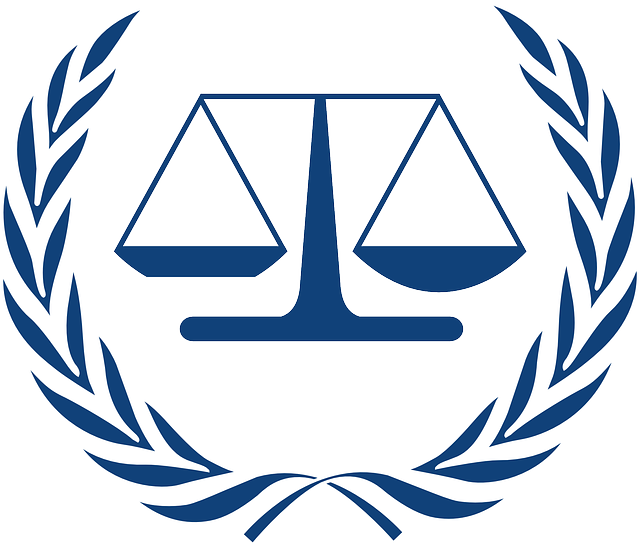Personal Injury Lawyer: Navigating Legal Complexities for Justice and Compensation
Introduction
In the intricate web of legal services, personal injury law stands as a beacon of hope for individuals who have suffered harm due to someone else’s negligence or intentional acts. A personal injury lawyer is a legal professional specializing in advocating for clients who have endured physical, emotional, or financial injuries resulting from accidents, assaults, or other wrongful conduct. This comprehensive article delves into the multifaceted world of personal injury law, exploring its definition, global reach, economic implications, technological innovations, regulatory frameworks, challenges, case studies, and a glimpse into its future trajectory. By the end, readers will grasp the critical role these lawyers play in securing justice, compensation, and accountability for their clients.
Understanding Personal Injury Lawyer: A Cornerstone of Legal Aid
Definition and Core Components
A personal injury lawyer, also known as a tort lawyer, is a legal expert who represents individuals or entities (plaintiffs) who have incurred losses due to the negligence, intentional actions, or strict liability of another party (defendant). The primary focus of this practice area lies in civil litigation, where lawyers navigate complex laws and procedures to seek fair compensation for their clients’ injuries.
The core components of a personal injury lawyer’s work include:
- Case Assessment: Evaluating the merits of a potential case, considering factors like liability, damages, and applicable statutes of limitations.
- Legal Research: Thoroughly researching relevant laws, court decisions, and legal precedents to build a robust case strategy.
- Client Communication: Effectively communicating with clients, explaining legal processes, and addressing their concerns and expectations.
- Negotiation and Settlement: Engaging in settlement negotiations with the defendant’s insurance companies to achieve an amicable resolution without going to trial.
- Litigation: If a settlement cannot be reached, lawyers prepare and file a lawsuit, represent clients at trials or hearings, and argue for their rights and compensation.
- Damages Advocacy: Calculating and presenting evidence to determine the fair value of damages, including medical expenses, lost wages, pain and suffering, and punitive damages where applicable.
Historical Context and Significance
The roots of personal injury law can be traced back to ancient civilizations, where early legal systems addressed wrongs committed against individuals. Over centuries, these laws evolved to create a structured framework for resolving conflicts arising from personal harm. In modern times, personal injury law has become a vital component of civil justice systems worldwide, ensuring that victims are compensated and held accountable for their actions.
The significance of personal injury lawyers lies in several key aspects:
- Advocacy for Victims: They empower individuals who might otherwise be at a disadvantage due to the legal complexities and power dynamics involved in personal injury cases.
- Seeking Justice: These lawyers strive to ensure that those responsible for causing harm are held liable, thereby upholding the principles of justice and deterring similar future misconduct.
- Compensation and Rehabilitation: Personal injury lawsuits provide financial compensation for medical expenses, lost earnings, and pain and suffering, aiding in the victim’s rehabilitation and recovery process.
- Public Safety: By holding negligent or reckless individuals accountable, personal injury law contributes to improved public safety by encouraging responsible behavior.
Global Impact and Trends
International Influence
Personal injury law operates within a global legal framework, with variations in laws, procedures, and cultural perspectives across different countries. Despite these differences, several common threads tie together the practice of personal injury law worldwide:
| Region |
Key Features |
| North America |
Stricter liability rules, emphasis on negligence principles, robust compensation for non-economic damages (pain and suffering). |
| Europe |
Comprehensive worker’s compensation systems, strict product liability laws, emphasis on consumer protection. |
| Asia Pacific |
Varied approaches, with some countries having strict liability for certain products, while others focus more on negligence. |
| Middle East |
Influenced by Islamic law, which provides a framework for damages in tort cases, often emphasizing restitution and deterrence. |
| Latin America |
Similar to North America in principles but with variations in court structures and procedural rules. |
Shaping Trends
Several global trends are shaping the future of personal injury law:
- Technological Advancements: The use of technology for case management, evidence collection, and expert testimony is increasing, enhancing efficiency and accuracy.
- Global Standardization: Efforts to harmonize legal principles across borders, especially in cross-border cases, aim to simplify dispute resolution.
- Emerging Technologies’ Liability: As new technologies like autonomous vehicles and artificial intelligence raise unique liability issues, laws are evolving to address them.
- Public Awareness and Education: Growing public awareness of personal rights and safety standards influences legal trends and client expectations.
Economic Considerations: Market Dynamics and Impact
Market Overview
The personal injury law market is a significant segment of the global legal services industry. Key players include individual lawyers, law firms, and specialized litigation departments within larger legal service providers. The market dynamics are influenced by several factors:
- Case Volume: The number of personal injury cases varies across regions, driven by factors like population density, traffic accidents, workplace injuries, and product liability incidents.
- Client Expectations: Higher expectations for compensation and faster resolutions drive market demand and lawyer strategies.
- Insurance Industry: Insurance companies play a crucial role in personal injury cases, influencing settlement negotiations and legal costs.
- Legal Costs: Attorney fees and case expenses vary widely depending on the complexity of cases, location, and whether they settle or go to trial.
Economic Impact
Personal injury law has substantial economic implications:
- Compensation Payments: Personal injury lawsuits result in significant compensation payments, contributing to individuals’ financial stability and local economies.
- Insurance Premiums: Strict liability laws and high award amounts can lead to increased insurance premiums for businesses, influencing their operational costs.
- Legal Services Revenue: The industry generates substantial revenue, supporting a large workforce of lawyers, paralegals, and support staff.
- Economic Growth: Effective personal injury litigation encourages responsible behavior, potentially reducing future incidents and fostering economic growth.
Technological Innovations: Enhancing Legal Practice
Digital Transformation
Technology has revolutionized personal injury law practice, improving efficiency, accessibility, and case outcomes:
- Case Management Software: Lawyers use specialized software for case tracking, document management, and communication with clients and experts.
- Online Research Tools: Access to comprehensive legal databases enables quick research, saving time and resources.
- Expert Testimony: Video depositions and remote expert witnesses enhance case presentation, especially in complex cases.
- E-Discovery: Electronic discovery tools streamline the process of reviewing and producing digital evidence, reducing costs and increasing efficiency.
Artificial Intelligence (AI) and Automation
AI is emerging as a game-changer in personal injury law:
- Predictive Analytics: AI algorithms analyze past case outcomes and legal data to predict settlement amounts and trial results, aiding in case valuation.
- Document Review: Natural Language Processing (NLP) technologies assist in reviewing documents for relevant information, reducing the time spent on mundane tasks.
- Legal Research: AI-powered research tools provide faster access to legal precedents and statutes, enhancing lawyer decision-making.
- Client Interaction: Chatbots and virtual assistants can handle basic client inquiries, providing immediate responses and improving customer service.
Regulatory Frameworks: Ensuring Fair Practice
Legal Professions Regulation
Personal injury lawyers operate within a framework of professional regulations that vary by jurisdiction:
- Licensing and Admission: Lawyers must be licensed and admitted to practice in their respective jurisdictions, meeting educational and ethical standards.
- Ethical Guidelines: Professional codes of conduct guide lawyers’ behavior, ensuring integrity, confidentiality, and competent representation.
- Continuing Legal Education (CLE): Mandatory CLE requirements ensure that lawyers stay updated with legal developments and maintain high professional standards.
Tort Law Statutes and Rules
Tort law statutes govern personal injury cases, outlining:
- Liability: The circumstances under which a defendant can be held liable for harm caused to others.
- Statute of Limitations: Time limits within which plaintiffs must file their claims after the incident.
- Damages: Types and caps on compensatory damages, as well as guidelines for punitive damages in certain cases.
- Discovery Rules: Procedures for exchanging evidence and information between parties during litigation.
Challenges: Overcoming Obstacles
Complex Case Management
Personal injury cases can be complex, involving multiple defendants, expert testimony, and intricate medical or scientific issues. Lawyers must manage these complexities while navigating legal procedures and deadlines.
Defendant Tactics
Insurance companies and defendants often employ aggressive strategies to minimize liability and settlement amounts, such as:
- Discrediting Plaintiffs: Challenging a victim’s credibility through cross-examination, employing private investigators for surveillance, or using social media posts.
- Medical Record Examination: Examining medical records to identify pre-existing conditions or alternative causes of injury, potentially reducing compensation.
- Statute of Limitations Defenses: Arguing that the statute of limitations has expired to dismiss cases or delay proceedings.
Access to Justice Issues
Ensuring access to justice for all plaintiffs remains a challenge in some regions:
- Cost Barriers: High legal fees and case expenses can deter individuals with limited resources from pursuing claims.
- Lack of Legal Aid: Insufficient legal aid programs may leave vulnerable populations without legal representation.
- Complex Court Procedures: Navigating complex court processes can be daunting for laypersons, leading to poor outcomes or defaults.
Case Studies: Real-World Impact
Medical Malpractice Suit
Case: Smith v. Hospital Corporation
Summary: A patient (Mr. Smith) developed a severe infection after undergoing routine surgery at a reputable hospital. His subsequent medical bills and prolonged recovery led him to hire a personal injury lawyer.
Outcome: After extensive litigation, the court ruled in Mr. Smith’s favor, finding the hospital negligent in its care. The settlement amount covered his medical expenses, lost wages, and pain and suffering. This case set a precedent for holding healthcare institutions accountable for medical malpractice.
Product Liability Settlement
Case: Johnson v. Toy Manufacturing Co.
Summary: A child (Johnson) choked on a small toy part that became dislodged from a seemingly safe toy. His parents filed a product liability suit against the manufacturer.
Outcome: The case settled out of court with the manufacturer agreeing to recall the faulty toys and pay substantial compensation for the child’s medical expenses, emotional distress, and future care needs. This highlighted the importance of product safety regulations.
Conclusion: Shaping the Future
Personal injury law plays a vital role in society by providing remedies for individuals harmed by others’ actions. As technology advances and legal standards evolve, personal injury lawyers must adapt to new challenges and opportunities. Embracing technological innovations while adhering to ethical practices will ensure that justice is served efficiently and effectively in an ever-changing legal landscape.
Personal injury law in Lafayette seeks justice for negligence or intentional harm, with hiring a local personal injury lawyer offering key advantages. These include deep regional legal knowledge, effective evidence gathering, and strong negotiation skills. When choosing a law…….
In Lafayette, a personal injury lawyer is essential for victims of car collisions and medical malpractice. They provide crucial support, navigating complex legal issues and ensuring clients' rights are protected. From investigating accidents to negotiating with insurers…….

